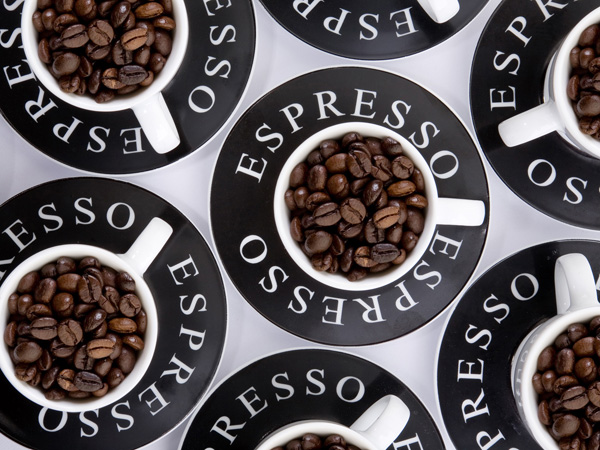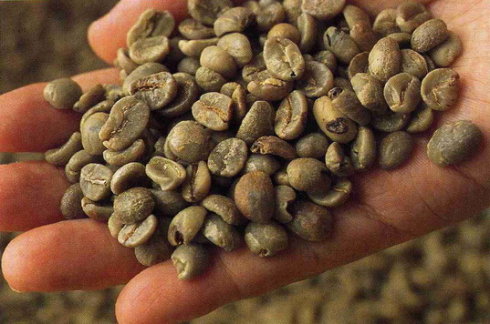The concept of Fine Coffee Specialty Coffee (1) the third Wave of Coffee Culture and History in the World
The traditional classification of coffee beans is usually based on the classification criteria defined by the coffee producing countries, and then agreed to become common in the international market and traded under such a tacit understanding. For a long time, coffee producing countries have their own classification and evaluation criteria for coffee, which serve as the pricing guidelines in the coffee market. But slowly in recent years, coffee consumers began to demand a unified evaluation criteria, which is the rise of the so-called boutique coffee Specialty Coffee concept.
In the past, there were three grading and evaluation criteria for coffee producing countries:
1. Graded according to the altitude of the producing area
two。 According to the coffee bean sieve, that is, the coffee bean size classification
3. According to the screen, the proportion of defective beans and the comprehensive method of taste test
1. Graded according to the altitude of the producing area
Because the higher the altitude and the lower the relative temperature, the coffee fruit can mature slowly, such beans have good expansibility and are easy to bake, and the coffee beans produced in the highlands can not be operated on a large scale by machine, so they can only be picked by hand, with high cost and few defective beans, so the coffee products produced in the highlands are better than those in low real estate, so almost all coffee-producing countries in Central America use this as a grading and evaluation standard. For example, SHB (Strictly Hard Bean) is the highest quality coffee bean in Guatemala, which is mainly grown above 1350 meters above sea level, while SHG (Strictly Hard Grown) is the highest quality coffee bean in Mexico, which is mainly grown above 1700 meters above sea level. For example, Honduras and El Salvador also take SHG (Strictly Hard Grown) as the highest quality, but grow above 1200 meters above sea level.
Coffee bean sieve
two。 Grading according to coffee bean sieve (coffee bean size)
This method is used in Kenya, Tanzania, Colombia and other producing countries, mainly based on raw beans through a hole in the iron plate screen to determine the size of beans, as a grading standard. The size of the sieve hole is 1x64 inches, and the so-called number 17 sieve means that the size of the sieve hole is 17x64 inches, which means that the raw bean is larger than 17x64 inches (about 6.75mm), and it will be selected if it cannot pass through the sieve. The larger the screen size, the larger the granules of the coffee beans. For example, the most advanced AA grade coffee beans in Tanzania are sieves with sieve size 18 or above; Kenya AA coffee beans with granules over 7.2mm; Colombia has sieves with Supremo grade 17 or above, and Excelso sieve 16 with 11% sieve particles mixed with 14.
In actual baking and tasting, the taste of coffee beans with large particles is usually more abundant than those with small particles, so there is a basis for grading with coffee bean sieve (coffee bean size).
On the right is Columbia Special selection (Supremo)
3. According to the screen, the proportion of defective beans and the comprehensive method of taste test
This is the method adopted by Brazil, a big coffee producer, which uses the percentage deduction method of defective beans, plus a sieve (the size of coffee beans) and a three-stage comprehensive taste test (Cup Testing) to grade.
For example, Brazilian coffee beans are marked as:
A producing country in Brazil
The first exit port of Santos
No.2 defective beans are mixed into the quantity classification, usually No.2 stands for the highest level, the blending is the least, and the lowest is the maximum lower limit of No.8 blending.
Sieve No. 19 indicates the size of coffee beans, and No. 19 indicates beans that pass through the hole of the sieve with a diameter of 7.54mm. Brazil said on the 12th and 20th.
Extremely mild (Strictly Soft) indicates the grading of the taste test done by the Cup Testing, and extremely mild means the most advanced.
Brazil will adopt this unique three-stage comprehensive classification because of its large production and high production, and the quality control method of mixing coffee beans is often made in order to adjust the special taste of exported coffee.
Grading standard of Jamaican coffee
As countries mark zero total, and there is no unified evaluation standard for producing areas such as Jamaica Blue Mountain Coffee, all in all, "the production of large particles in the flawless highland is good beans." Slowly in recent years, the voice for a unified evaluation standard is getting higher and higher, so the United States, as the largest consumer of coffee, put forward the concept of fine coffee Specialty Coffee 30 years ago.
The so-called boutique coffee Specialty Coffee term first appeared in 1978, was proposed by Ms. Knudsen of Knudsen Coffee Company at the international coffee conference and began to spread. Boutique coffee Specialty Coffee is defined as coffee beans with unique flavor cultivated under special climatic and geographical conditions. The special climate and geographical conditions (Microclimates) here apply the concept of so-called wine tasting. Just like the grapes in wine producing areas, they are affected by the local climate, geographical environment, harvest and other factors, which affect the flavor of wine.
At first, the effect of coffee tasting such as wine did not respond immediately, because although the United States is the largest consumer of coffee, most of the coffee beans imported by the United States are inferior or inferior, such as Brazil's No.5 grade, gradually until the European espresso trend (Espresso) is introduced to the United States, and brands such as Starbucks that emphasize the use of high-quality coffee beans begin to lead the way. It has become an importer and spokesman of high-quality coffee in just ten years.
SCAA Logo of the Fine Coffee Association of America
At present, there is no strict and unified definition of boutique coffee Specialty Coffee, which is mainly put forward by the national boutique coffee association SCA. We will introduce it in detail in the next issue.
Source:
The blog of the coffee wizard
Important Notice :
前街咖啡 FrontStreet Coffee has moved to new addredd:
FrontStreet Coffee Address: 315,Donghua East Road,GuangZhou
Tel:020 38364473
- Prev

Coffee blending is not that simple the difference between individual coffee and blended coffee Italian coffee
What is matching? Since it is a blending, it naturally refers to the blending of more than two kinds of raw beans, but it can also match the same kind of coffee beans with different roasting degrees, or even new crop and aged coffee or old crop of the same kind of coffee beans, so the type referred to in the blending is no longer a coffee variety in a narrow sense, but extended to coffee in a broad sense.
- Next

The importance of hand-selected coffee beans the quality of hand-selected coffee raw beans reduces the chance of defective beans
Previously discussed a good cup of coffee, that is, the selection of flawless coffee beans, after proper roasting, fresh grinding, brewing, the correct extraction of the taste of coffee standards and practical steps. (please refer to the previous post: what is a good cup of coffee and how to get a good cup of coffee?) The standard procedure is as follows: 1. Master raw beans 2. Raw bean hand chooses 3. Fresh baking 4.
Related
- What is the meaning of lactic acid fermentation with coffee bean treatment?
- How to judge the state of foam by sound?
- How does the latte pull out the unicorn pattern? Come to get for a little trick to improve the flower pull!
- Will flower pulling affect the taste of the latte?
- Do you know the history of coffee?
- The difference between honey treatment and sun washing what is raisin honey treatment?
- What kind of milk can a novice use to make coffee foam to keep the foam longer? The correct method and skills of milking tutorial sharing
- Why do washed coffee beans taste sour? Flavor characteristics of washed Coffee
- Introduction to the skill of how to practice the size and height of water injection around the circle of hand-brewed coffee
- How do beginners practice coffee flower drawing from scratch?

